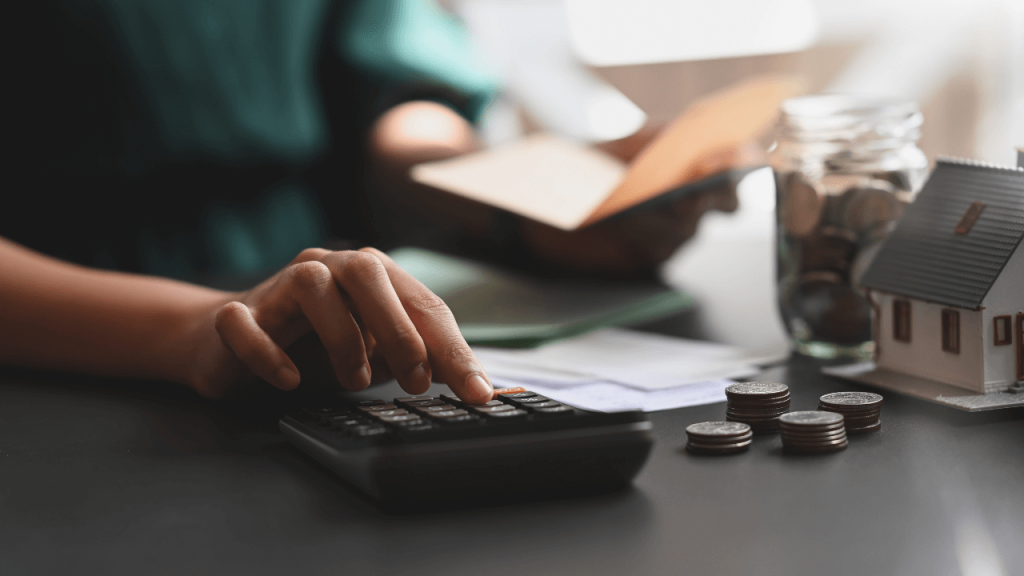The Malaysian property market has become a hub of growth and opportunity, attracting both local and international investors. The diversity of property options, from bustling urban apartments to serene suburban homes, provides ample opportunities for potential buyers. However, the property purchase process can be intricate and daunting, particularly for first-time buyers. Understanding this process is crucial for making informed decisions and ensuring a seamless transaction. This article offers a step-by-step guide to purchasing property in Malaysia, detailing every essential phase from the initial considerations to the finalization of the deal. Whether you’re investing in a commercial property or buying a home, this guide will equip you with the necessary knowledge to navigate the Malaysian real estate market confidently.
1. Viewing Properties
The initial step in purchasing property involves conducting thorough research to identify potential properties. This includes exploring online listings, engaging with real estate agents, and utilizing property portals to find options that meet your preferences and budget. Once you have a shortlist, scheduling and attending property viewings are essential. These visits allow you to assess properties firsthand, evaluating factors such as location, condition, and amenities.
Thoroughly inspecting the property during viewings is crucial. Look beyond aesthetics and check for structural integrity, potential repairs, and overall maintenance. Issues like water damage, electrical faults, and pest infestations should be addressed to avoid future complications. Consider the property’s potential for appreciation and any nearby planned developments. Careful evaluation ensures you make a well-informed decision that aligns with your long-term goals.
2. Making an Offer (Earnest Deposit)
Once you’ve identified a suitable property, the next step is deciding on an offer price. Analyze market trends, compare similar properties, and consider the property’s condition and features to set a competitive yet reasonable offer price.
After determining the offer price, submit your offer to the seller, typically through a real estate agent. The proposal should outline your offer price and any specific terms or conditions. Providing an earnest deposit at this stage demonstrates your serious interest and financial readiness to proceed with the purchase.
Negotiating terms and conditions with the seller is crucial. Discussions may include the final sale price, contingencies, timelines, and necessary repairs. Effective negotiation requires clear communication, flexibility, and a willingness to reach a mutually beneficial agreement. Securing a fair deal through careful negotiation paves the way for a smooth transaction.
3. SPA Preparation (Sale and Purchase Agreement)
The preparation of the Sale and Purchase Agreement (SPA) is a critical step, requiring the expertise of a qualified lawyer. The lawyer drafts a legally binding contract outlining the terms and conditions agreed upon by both buyer and seller. This document ensures that all parties are protected and the transfer of ownership is conducted smoothly.
Key components of the SPA include the property’s detailed description, agreed purchase price, payment terms, and transaction timeline. It also covers contingencies, repair responsibilities, and warranties provided by the seller. The SPA specifies the consequences of default by either party, safeguarding both buyer and seller.
Once the SPA is prepared, both parties review and sign it, signifying their agreement to the terms. After signing, the buyer pays the balance of the 10% down payment, having already paid the earnest deposit. This payment secures the buyer’s right to the property under the agreed terms, ensuring a successful transaction.
4. Financing

Assessing your financial capability and creditworthiness is vital. Evaluate your income, savings, debts, and overall financial health to determine how much you can afford to spend on a property. Reviewing your credit score is also essential as it impacts your ability to secure a mortgage and the interest rates offered.
Explore various financing options by consulting banks, mortgage brokers, and financial advisors. Each institution may offer different interest rates, loan terms, and repayment options, so compare offers thoroughly. Engaging a mortgage broker can provide access to a wider range of lenders and better terms.
Prepare and submit your loan application with the chosen financing option. Gather required documents such as proof of income, bank statements, identification documents, and details of existing debts. You may also need to provide information about the property, including the signed SPA.
Submitting a complete and accurate loan application increases your chances of approval. Ensure all documents are in order and address potential issues proactively for a swift approval process.
5. Acceptance of Loan
Upon processing your loan application, the bank will offer you a loan. Carefully review the terms and conditions, including the interest rate, repayment schedule, and additional fees.
Scrutinize the loan terms to ensure they align with your financial plans. Seek clarification on unclear terms from the bank or consult a financial advisor. Understanding the loan agreement helps avoid unforeseen financial burdens.
Formally accept the loan by signing the letter of offer. This legally binding document confirms your agreement to the loan terms. After signing, pay the necessary processing fees, including administrative charges, legal fees, and stamp duty, as specified in the offer.
By accepting the loan and completing the formalities, you secure the financing needed for your property purchase, moving closer to ownership.
6. Property Valuation
Property valuation is crucial in the loan process, providing an accurate estimation of the property’s market value. This assessment is vital for both lender and borrower, ensuring the property’s value aligns with the loan amount requested.
Licensed valuers conduct the valuation, assessing factors such as location, size, condition, and market trends. Their objective evaluation safeguards both parties’ interests.
During valuation, the valuer inspects the property and considers external factors affecting its value. The valuer prepares a detailed report documenting findings and conclusions.
Submitting the valuation report to the bank informs them of the property’s assessed value, influencing the loan amount offered. A valuation meeting or exceeding the requested amount strengthens the loan application.
Property valuation provides transparency and assurance, facilitating informed decision-making in property transactions.
7. Loan Agreement

After property valuation approval and loan offer acceptance, the bank prepares the loan agreement. This document outlines the final loan terms, including interest rate, repayment schedule, and penalties.
Sign the loan agreement in the presence of a lawyer to ensure legal validity. The lawyer witnesses the signing and verifies proper execution.
Understand the loan terms before signing, including interest rates, repayment terms, and obligations. Seek clarification on unclear terms from the bank or consult your lawyer.
Pay the associated legal fees and stamp duty specified in the agreement. These costs cover legal processing and registration of the loan.
Executing the loan agreement and fulfilling related formalities secure the necessary financing, bringing you closer to completing the transaction.
8. Disbursement and Payment of Stamp Duty
After signing the loan agreement, the bank disburses the loan amount to the seller, facilitating the property transaction completion. The bank coordinates with the seller’s legal representative for secure funds transfer.
Pay the remaining balance of the purchase price, combining it with the initial deposit and loan amount. Timely payment avoids delays in ownership transfer.
Calculate and pay stamp duty on the SPA, a government-imposed tax based on the property’s value. This tax is handled by your lawyer and paid to the Inland Revenue Board of Malaysia (LHDN).
Submit necessary documents, including the stamped SPA and payment proof, to the Land Office for official registration. This formalizes the ownership transfer and updates the land title.
Completing these steps finalizes the property purchase, securing your legal rights and achieving ownership.
Conclusion
Purchasing property in Malaysia involves a series of well-defined steps to ensure a smooth transaction. Recap the process: research and view properties, make an offer, prepare the SPA, secure financing, accept the loan, conduct property valuation, finalize the loan agreement, and complete disbursement and stamp duty payment.
Understanding each step and being prepared ensures informed decisions, effective financial management, and a successful transaction. Vigilance during property viewings, negotiations, and legal proceedings is crucial.
Seeking professional guidance from real estate agents, lawyers, and financial advisors is recommended. Their expertise aids in navigating complexities and making sound investments.
In conclusion, while the property purchase process in Malaysia can be intricate, following these steps and seeking professional support ensures a rewarding outcome. Stay informed and proactive to confidently achieve property ownership.
References
To provide further insight and support your understanding of the property purchase process in Malaysia, here is a list of valuable sources and further reading materials, along with relevant Malaysian regulations and guidelines on property transactions.
Sources and Further Reading:
- PropertyGuru Malaysia – A comprehensive platform offering property listings, market trends, and buying guides.
- iProperty Malaysia – Another leading property portal that provides extensive resources on buying, selling, and renting properties in Malaysia.
- Malaysia My Second Home (MM2H) Programme – Official portal providing information for foreigners looking to buy property in Malaysia.
- EdgeProp.my – Offers property news, expert advice, and insights on the Malaysian real estate market.
- HomeGuru – Provides property listings, guides, and advice for first-time homebuyers in Malaysia.
Relevant Malaysian Regulations and Guidelines:
- National Land Code 1965 – The primary legislation governing land matters in Malaysia, including property transactions.
- National Land Code 1965
- Housing Development (Control and Licensing) Act 1966 – Regulates the housing development industry and protects the interests of buyers.
- Housing Development Act 1966
- Real Estate and Housing Developers’ Association (REHDA) Malaysia – Offers guidelines and resources for property developers and buyers.
- Inland Revenue Board of Malaysia (LHDN) – Provides information on property-related taxes, including stamp duty and Real Property Gains Tax (RPGT).
- Bank Negara Malaysia (BNM) – Central bank guidelines on housing loans and financing regulations.


